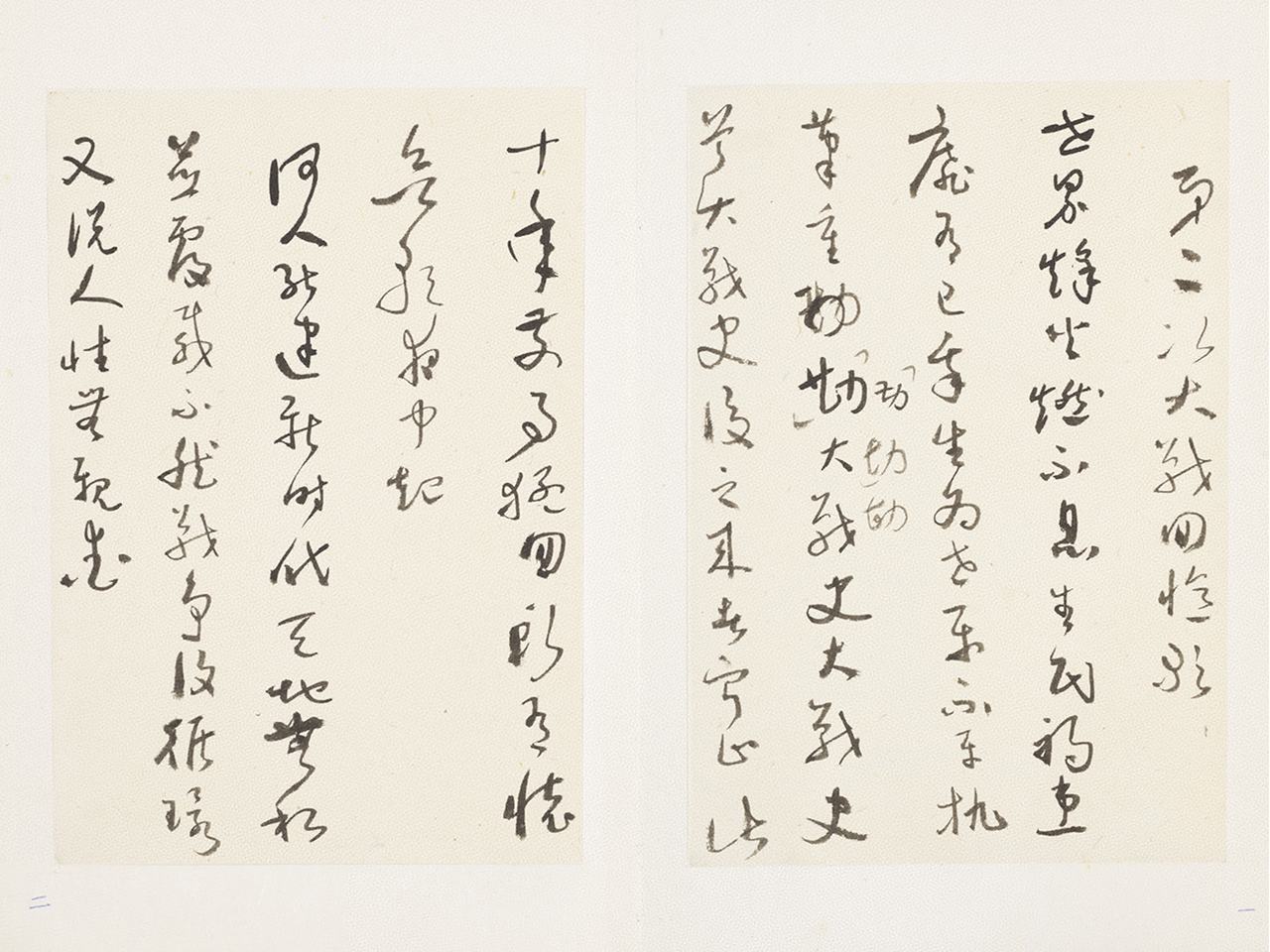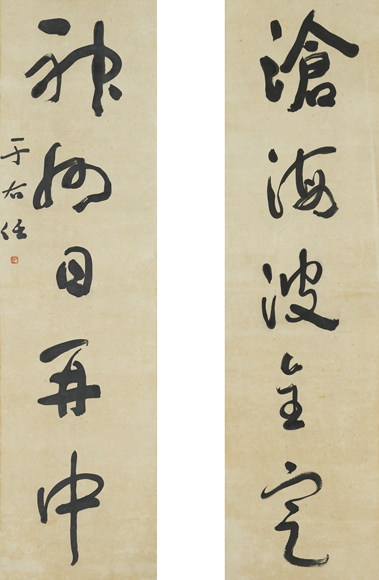The development of Yu Yu-jen's calligraphy can be divided into roughly three stages: modelbook studies, stele studies, and cursive script. However, relatively few of Yu's works from the modelbook phase survive. His stele studies began around the age of thirty, and the focus on cursive script started around his mid-fifties. In fact, many of the works by Yu in the National Palace Museum collection are from after the age of fifty, thereby encompassing the two major styles for which he is best known--stele and cursive.
The influence of regular forms in Wei dynasty steles is evident everywhere in Yu Yu-jen's stele script. It is notable for characters often with a large head and small body but with dots and strokes that do not descend into the conventionality of overemphasizing the carved and diffused effect of stele calligraphy. Rather, Yu replaced these features with natural and dynamic brushwork, the lines he brushed being rounded with a mellow strength that imbues the frequent stiffness of stele script with new vitality.
When Yu Yu-jen devoted his time and effort to organizing and practicing standardized cursive script, some of the forms in his stele characters also weakened, the lines coming to the forefront of attention. And in between his lines appear an unexpected layering and rich variation, which both require careful observation and feeling on the part of the viewer to comprehend the marvels and extraordinary achievements of Yu Yu-jen's calligraphy.



